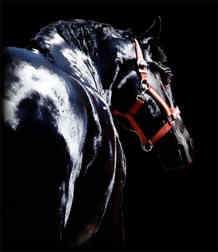
Coming soon all aspects of equine nutrition, from advice on specific types of horses, to a break away from traditional to natural diets for horses...
There are loads of misconceptions in the feeding of horses with little scientific input/research. There is a lot of research in non-ruminants (pigs, chickens), it is enormously advanced and the nutrients have been worked out exactly (aa requirements and E content for specific outcome). Ruminants (cows, sheep) nutrition research has improved considerably in the last 40 years (1947). However research in equids is surrounded in myth with no scientific understanding. The data on feeding horses is very poor therefore there are opportunities for research. The principles of biochemistry are cross species and are common to all mammals.
Animal
Nutrition
Animal
nutrition is based on supplying the animals with nutrients for maintenance or
production, foal, milk, meat or work. There
are three aspects to animal nutrition:
1.
Feeds and
their nutritional value (analytical, chemical analysis – general)
2.
Animal requirements and response to feeding (specific)
3.
Developing models of feeding or feeding schemes
Domesticated
Animals
Farm animals were domesticated around 8000BC in
Mesopotamia, Aegean Sea and Turkey (East Mediterranean).
They spread around 5000BC and came to Western Europe.
The animals were goats, cattle, sheep and pigs.
The
Horse
There is mystery surrounding the ancestology of the
horse. It is thought that horses
evolved in the Eocene era and were 4 toed and 40 cm high and originated in N.
America 1/2 - 1 million years ago. They
then migrated throughout the rest of the world and eventually became extinct in
the New World but flourished everywhere else.
According to other sources the belief is that they actually originated in China, Mesopotamia. There are widespread cave paintings from about 1000BC showed that horses were domesticated all over Asia, Europe and N. Africa. Horse changed the shape of Europe, enabling man to travel rapidly. In warfare the side with horses won the war.
Equids -
Family -
Equadae
Genus -
Equus
Species -
Equus Caballus
Breeds -
Over 100 (Shetland to Shire)
Within the genus there are only 6 living members.
Within the species there are 100+ different breeds varying from 1m high
through to 2m 1200kg. Equus
Caballus is the ONLY SINGLED TOED ANIMAL IN THE WORLD.
(All of page 4) All of these animals have some portion of GIT enlarged and containing micro-organisms that ferment the food. No animal has a sterile gut, but herbivores rely heavily on the micropopulation, bacteria, protozoa and fungi. Horse relies on microbial fermentation more than us
How many people have heard of the phrase “oats are heating” and either feed them to their horse to give him more “heat” or avoid foods that contain oats because their horse become difficult to manage. There has been this link with food and behaviour but it has never been proved or disproved. There are so many feed products out on the market that are “non-heating” but is there any real link between diet and behaviour?
LEWIS (1995) stated that excess energy caused by food intake or lack of exercise, can lead to hyperactivity in the horse and/or body fat.
PAGAN (1997) concluded that the only important factor governing feeding and behaviour is the calorie intake. He found Standardbred horses, which were fed high carbohydrate diets, had higher heart rates during a standard exercise test, than horses fed a high fat diet. They also appeared more excitable but this was subjective. His theory was that when a meal is fed to a horse, blood glucose levels increase. In humans mental disorders are a result of uncontrollable fluctuations of brain glucose levels acting in conjunction with insulin resilience. These fluctuations affect the neurotransmitter serotonin. Horses evolved eating diets that were fairly low in non-structural carbohydrates, so in the wild would not experience fluctuations in blood glucose and insulin. Insulin resistance is common in horses, so it is conceivable that horses may experience high levels of glucose and insulin in the brain.
Supplemented chromium increases the sensitivity of tissues to insulin so less insulin produced after a grain meal. Horses fed supplemented chromium appeared calmer and experienced a lower incidences of tying-up.
Frape pp 28, 69, 206
LEWIS L. D, (1995)
Equine Clinical Nutrition: Feeding
and Care, Williams & Wilkins,
London.
National Research Council (1989) Nutrient Requirements of
Horses, 5th Edition, National Academy Press, Washington DC.
PAGAN J, (1997) Carbohydrates in Equine Nutrition. 2nd International Conference on Feeding Horses.